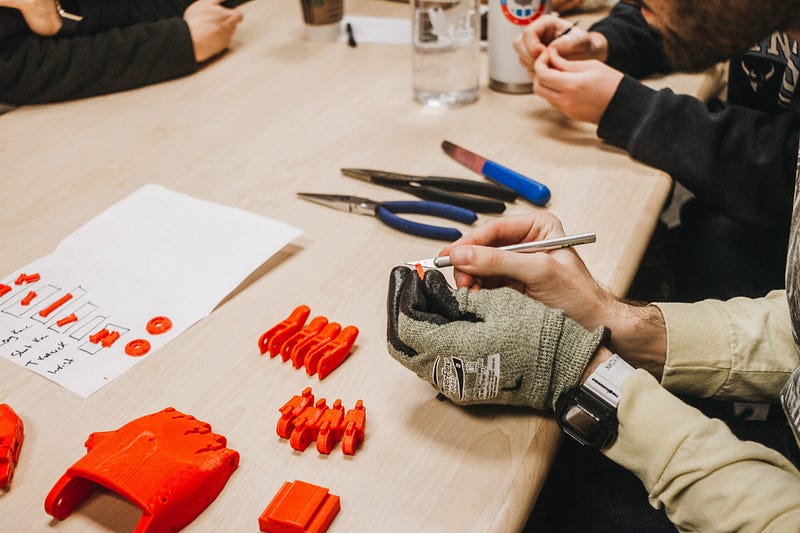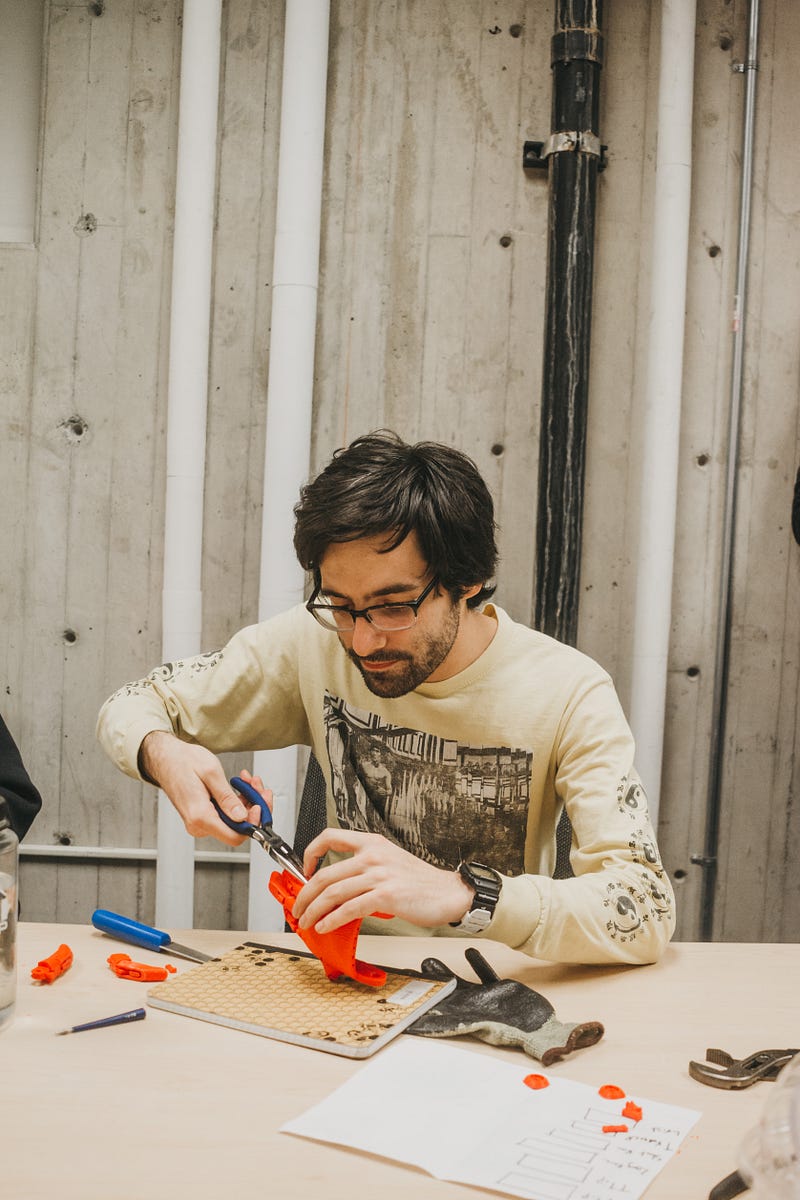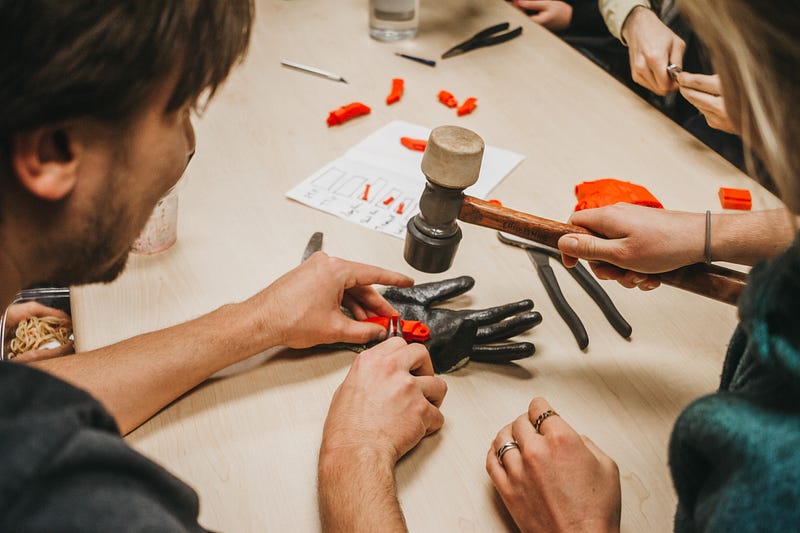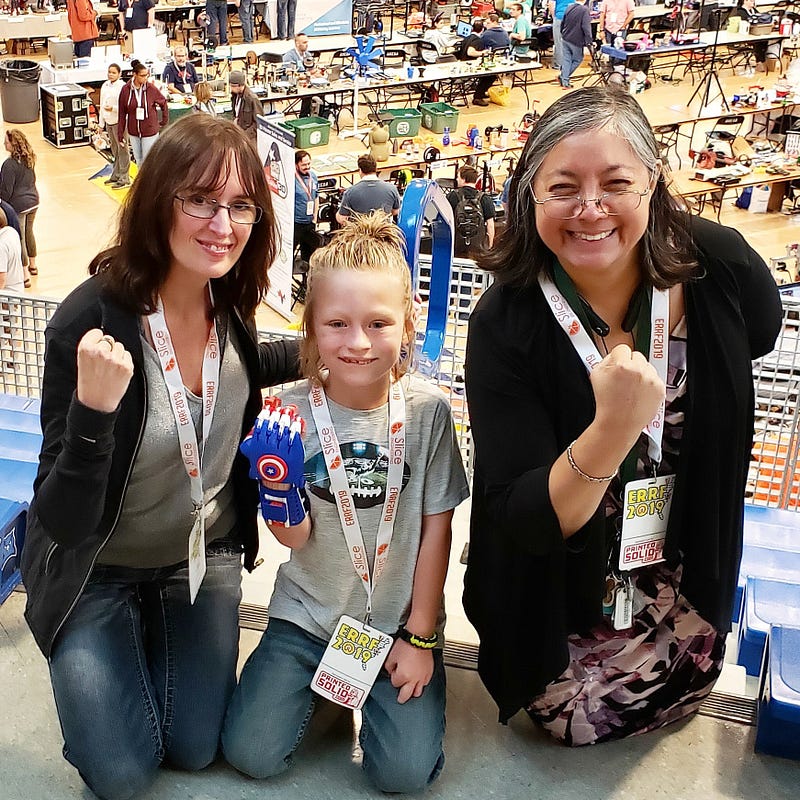Lending a Helping Hand
Western Washington University’s Materials Science Club donates 3D-printed prosthetic hands to the global community
By Alison Eddy

Hidden in a small break room in the Environmental Science building at Western Washington University, is a small group of students tinkering with bright orange pieces of plastic. They take turns twisting, turning and hammering these pieces together. A murmur of excitement fills the room as each piece fits into another.
Slowly, a shape begins to take form, and the cause of the group’s excitement becomes clear. The Materials Science Club built its first 3D-printed prosthetic hand.
Co-presidents Griffin Reed and Kayla Owens joined the Materials Science team back in the fall and winter quarters of 2018. Griffin said the club looks at various scientific fields, like chemistry and physics, and examines how they apply to engineering.
The motivation for materials science, he said, is to discover and engineer new materials for use in tools and instruments, and to better understand the materials we already have.

The club puts their knowledge into practice by 3D-printing prosthetic hands, in addition to working with the organization e-NABLE to donate the printed prosthetics.
According to their website, e-NABLE is an online global community of “digital humanitarian” volunteers from all over the world, using their 3D printers to make free and low-cost prosthetic upper limb devices for children and adults in need.
“We are basically jumping onto their program,” Griffin said. “They manage the meetings with patients and make sure everything is up to par.”

Jen Owen is the co-founder of e-NABLE. She has been with the organization since before it 3D-printed its first prosthetic for a small child in South Africa in January 2013.
She said there are over 140 chapters in dozens of countries such as Hungary, France, Ukraine, Tunisia, Thailand, India, Brazil and more. There are different types of volunteers such as designers who create the prosthetics, people who 3D print them and scout troops who assemble them.
“Some of the hands can get sent to us to send to clinics who need help and some go toward educating new medical professionals in under-served locations as models so they can learn to make them there,” Jen said. “No hand goes unused.”
The Materials Science Club is currently going through the accreditation process to become an official chapter of e-NABLE. Griffin and his colleague, Kyle Mikkelsen, started this process by building a prototype over the summer.
Kyle is the lab manager for AMSEC, the Advanced Materials Science Engineering Center at Western. He oversees all the instrumentation, like the microscopy equipment and 3D printers, that are shared between five departments on campus.
This opportunity presented itself to Kyle while he was looking for volunteer opportunities online. He has his own 3D printer at home and enjoys printing for fun.
“It seemed like a cool idea to use my hobby as a way to make prosthetics more accessible,” he said.
[embed]https://youtu.be/SfEainmqkBM[/embed]
There are many different types of 3D printers, but the most common printer, a LULZBOT Taz 6, is what the club uses to make their prosthetics.
“It is basically a motorized hot glue gun,” Kyle said. “Instead of glue, you put in plastic and it extrudes that plastic on a surface one layer at a time.”
The group says they print specifically for children. Griffin said kids grow quickly, so keeping up with expensive prosthetics over a child’s developmental life costs a lot of money.

A commercially-printed prosthetic hand can cost anywhere from a few hundred to a few thousand dollars, but the club can print a prosthetic hand for less than $10, in terms of plastic.
Griffin said the prosthetic hands are close to what is available on the low end of the commercial product spectrum. The printed hands don’t have human-like aesthetics or high-tech features, like electronic motors that are available in commercial prosthetics, but they are completely functional.
Griffin said it is important to provide functional and affordable prosthetics, especially for children because a lot of brain development occurs from ages six to 16 years old.
“The kids need to be able to build those skills with the prosthetic hand while they are still able to form those neural connections,” Griffin said.
Resources and downloadable templates are provided on the e-NABLE website for basic prosthetics, including some with special features.

“You can create a hand that would allow a child to play an instrument or do different tasks that they wouldn’t ordinarily be able to do,” Kayla said.
There is also an opportunity for organizations to custom print their own prosthetics from scratch for those who don’t fit basic prosthetics.
“That is where the club could really show their strength since we have people from all different backgrounds,” Kyle said. “The engineering students could do the computer designing and everyone else could help with printing and trying different materials.”
This group isn’t just for students with different scientific backgrounds. It is for anyone who wants to learn about materials science and be a part of the prosthetic program.
Kayla encourages people of all backgrounds to join the club and attend the meetings if they have a general curiosity for science or 3D printing.
“A lot of people, when they hear Materials Science Club, think it is just for science people,” Kayla said. “In reality, we are just a bunch of people who get together, hang out and build prosthetics.”
